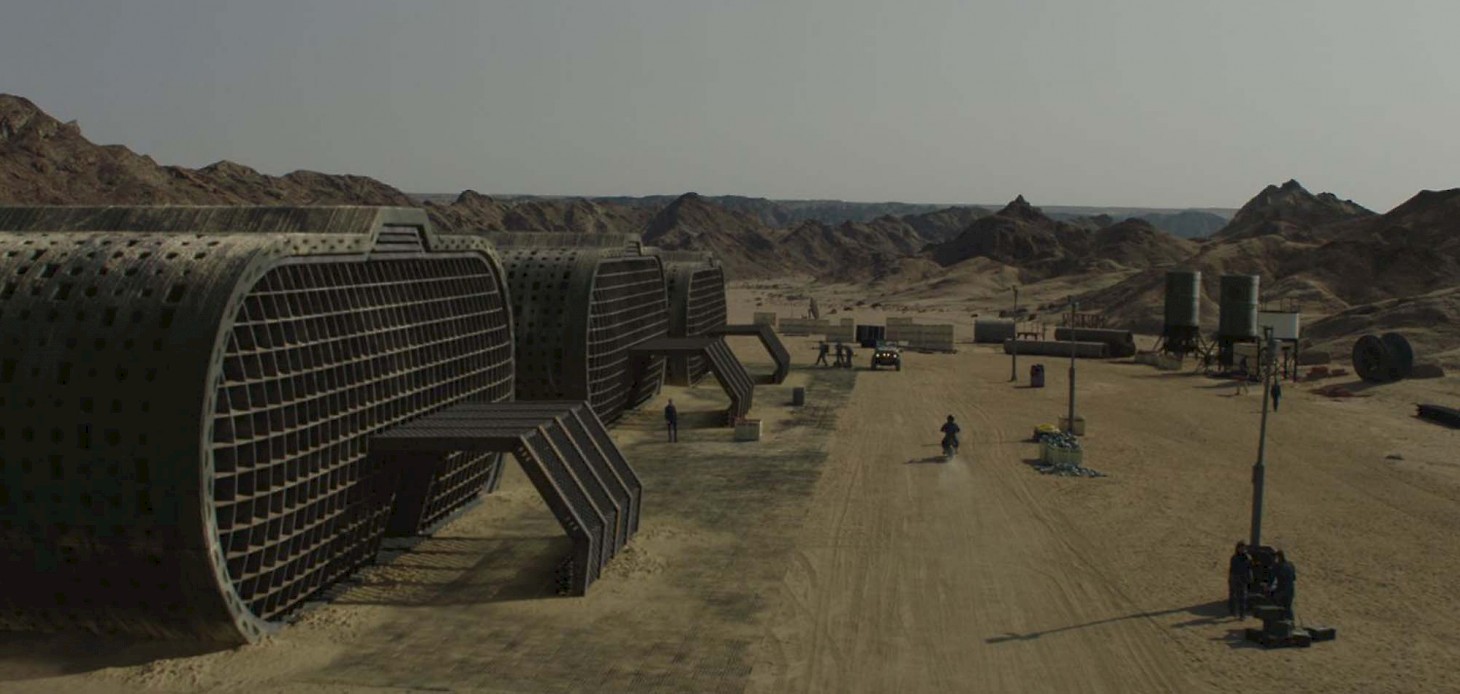Union help Establish an Oasis
Oasis is a one hour drama pilot based on Michel Faber's cult novel The Book of Strange New Things; co-produced by Left Bank Productions and Amazon Studios and Amazon Prime.
The year is 2032 and Earth’s biodiversity and civilisation is crumbling. Oasis follows chaplain Peter Leigh (Richard Madden) as he travels to join a team attempting to establish a permanent colony on a distant planet.
Union were excited to be reunited with Director Kevin Macdonald (they worked on How I Live Now and Black Sea) to help realise the world imagined by Faber and writer Matt Charman (Bridge of Spies).
Led by VFX Supervisor Simon Hughes, the team completed 173 shots in 6 weeks to transport audiences on a journey from a dystopian London to a new planet that it’s hoped offers an alternative future.
A decaying London is established via aerial shots of the Thames and its iconic landmarks. The 2032 setting required the team to add planned architectural projects such as the garden bridge as well as some imagined new architecture. They also damaged the London Eye, removed all moving traffic, filled the Thames and its surrounds with rubbish and created a camp for displaced residents. Atmospheric fire and smoke was also added as well as drones policing from above.
Inspiration for Leigh’s launch into space came from the Russian Soyuz rockets used to transport astronauts to the International Space Station and Baikonur Cosmodrome in Kazakhstan. Complexities of filming in the actual location prompted a move to Houtek near Cape Town and the decision to build a CG base.
The fully CG rocket was built in Maya with pre-launch shots composited into plates shot on location. Making the launch believable required Houdini fx simulations to replicate the movement of the rocket and its accompanying fire, dust, smoke and debris as it departs. 90% of the CG was rendered through Houdini and composited into
2.5d DMP / CG environments in Nuke.
The rocket reaches its destination in the midst of an aggressive dust storm making for a very violent landing and treacherous expedition to the base itself. There was a partial landing pad on-set that we extended in CG. All the shuttle exteriors are fully CG with swirling dust elements created and animated and rendered in Houdini.
Leigh awakes to the aftermath and our first glimpse of ‘Oasis’ reveals itself as an arid and barren landscape (filmed in the Namibian desert). There was a partial set build (half of the front of the central pod) surrounded by green screens, but the vast majority was built by the team along with surrounding machinery, props, a landing pad, monitoring drones, moon craters and a CG City in the distance.
Before he can travel, Peter has to undergo intensive physical tests. We see him running on a treadmill in front of a screen comprising an orientation video on Oasis as well as live stats of his vitals. When we reach the base its crew also use a multitude of graphene screens on workstations, larger monitors and handheld devices to keep abreast of the base’s stats as well as view surveillance footage captured on CCTV and by drones both inside and outside. Union created the GFX for these devices and insured they worked in context. The most complex environment created was, unsurprisingly, the surveillance office which is constructed of glass and contains a myriad of monitors which needed to be semi-transparent.
On this arid planet, water is the most essential resource and is extracted by a drilling process. A practical drill was built and filmed live action, but could only spin slowly. The script requires the drill to break ground and be seen doing this in both real time as well as slow motion. To achieve this the team built a version in CG and used Houdini to create dust and stone simulations that were rendered at a slower frame rate to create the correct speed and weight to realistically break ground. The original drill then needed to be removed, the surrounding landscape recreated and set up to be drilled into.
VFX Supervisor, Simon Hughes comments: “Building Oasis was a really exciting creative challenge. Kevin had a great vision. We formed a close-knit team with producers Rob Bullock and Lila Rawlings, editor Yan Miles, production designer Michael Carlin and Kevin himself to bring the world imagined in Michel Faber’s book to the screen. It was an ambitious schedule with 173 shots delivered in 6 weeks, but we’re really happy with the end result.”
Watch it for FREE here.

